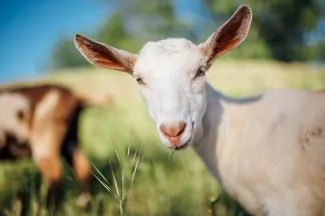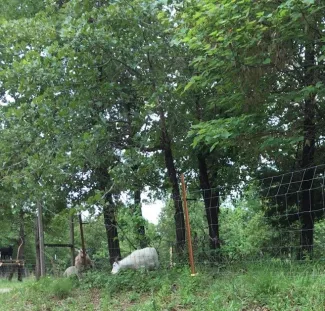Understory brush management and cedar removal are the practices that most landowners pursue and, often, what many properties need. Unfortunately, these are some of the most expensive land management practices that can be done. However, the benefits of controlling brush can be many.
In almost all circumstances, woody brush that is out of control will choke out desirable plant species, lower biodiversity, reduce the amount of grazable land, and can cause beneficial, low intensity fires to become catastrophic wildland fires. Conventional brush management systems tend to be expensive in time and money and can have huge liabilities, but they can also cause negative environmental impacts if done improperly.
Three methods are typically used to control brush: fire, heavy equipment, herbicides, or a combination of each. These systems do have major benefits, but they also have limitations. The question then becomes, “Is there an alternative to these conventional practices?” For some, the answer may be goats.

Goats are well suited to the task of brush control because they have some unique familial characteristics not shared by most common livestock – they prefer to browse instead of graze, like cattle and sheep. Goats will consume 60 percent or more of their diet on browse as compared to cattle’s 10 to 15 percent. This means you can successfully co-graze your property and not reduce your cattle stocking rate due to competition. Also, since forbs aren’t heavily used by cattle or goats, you can rotate some sheep into the system too, since they graze predominantly on forbs.

In general, brush and forbs are not adapted to repeated defoliation, unlike grasses. Thus, repeated defoliation will stress the plants making them more susceptible to pests and diseases or exhausting their root carbohydrate reserves until the plants die. Goats are also effective at stripping bark from trees like red cedar, honey locust, and black locust, essentially girdling the tree, eventually killing it.
Of course, there are strategies to consider when using goats to control brush. Ideally you want to divide the area into five paddocks and rotate the goats when the foliage and twigs of the less than desirable brush have been greatly reduced. Also, start the management early before the infestation level is too bad. It’s much easier to control 10-foot cedars than 20-foot cedars. Hitting the brush hard in the spring with a high stocking rate is recommended. Re-browsing each paddock as the foliage regrows is important as repeated defoliation throughout the growing season and into dormancy will offer the best overall brush control. Monitoring, too, is important so that grazing strategies can be adjusted according to overall goals.
Fencing will need to be considered if goats are desired for controlling brush. Making some fencing modifications to your perimeter with hot wire or replacing with woven sheep and goat wire is important. Cross fencing the areas you want to control brush is also beneficial. Electric fencing works very well for this and, along with the electric fencing, it’s a good husbandry practice to have a livestock guardian dog.
Overall, goats can be valuable management tools. They can go where equipment like bulldozers cannot and they are considered low impact animals, meaning they rarely cause soil compaction or erosion issues. Goats are also great for steep areas and can help control the encroachment of brush within firebreaks. Species like multiflora rose, autumn olive, sericea lespedeza, blackberry, greenbrier, locust, sumac, buckbrush, hickory, and poison ivy/oak are no match for the diet of goats, but many other species are also consumed. Perhaps greatest of all is the value of goats for improving wildlife habitat through the control of invading brush. Simply put, goats can be a tool to increase habitat quality and diversity when wildlife goals are combined with a strategic browsing strategy.